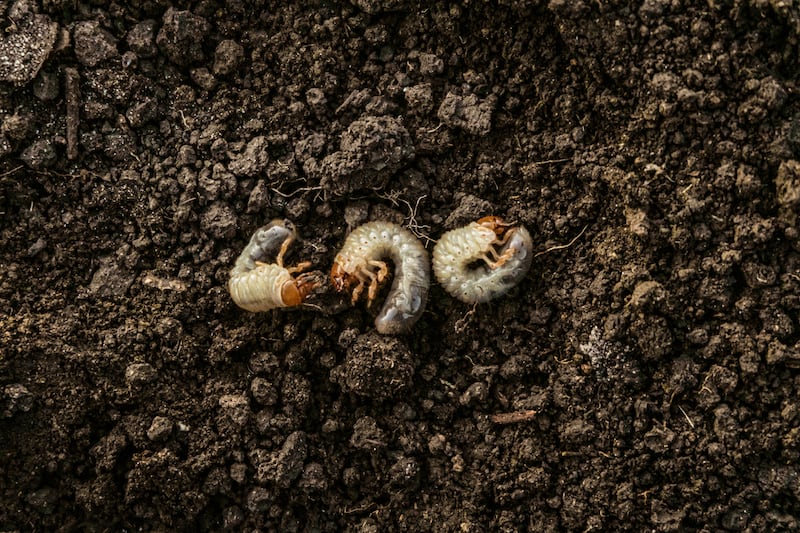Since last autumn, I’ve regularly discovered fresh holes in the lawn as well as scratch marks on a favourite tree. I suspect my garden is being visited by a badger. Is this damage likely to continue – and what should I do? Anna, Co Wicklow
It’s not unusual for these nocturnal omnivorous mammals to visit gardens at night. Large, powerful, muscular animals, they use their heads and strong, sharp claws to excavate the ground in search of food, often leaving what are known as “snuffle holes” behind them. About 80 per cent of their diet is typically comprised of earthworms and chafer grubs, but they’ll also eat small animals and reptiles such as rodents, rabbits, hedgehogs and frogs as well as bulbs, vegetables and fruit.
Given the time of year that the visits to your garden first started, it’s very possible that your visiting badger is seeking out chafer grubs in particular. The larvae of certain species of chafer beetle are C-shaped and cream-coloured, with a dark head, and are about 15mm in length. Unlike the larvae of the vine weevil, with which they’re sometimes confused, chafer grubs can be distinguished by the fact that they have distinct legs.
It’s worth bearing in mind that some species of chafer grubs play a beneficial role in the ecosystems of our gardens
These grubs hatch from eggs laid in the lawn by the parent beetle in autumn and then burrow deep into the ground, where they remain dormant over winter before pupating to emerge as chafer beetles in spring. For badgers they are a great delicacy, and they will go to some lengths to excavate them from their winter hiding spots, often causing considerable damage to lawns as they do so.
The good news is that the number of chafer grubs in the ground naturally declines in late spring as they pupate into adult beetles, which may discourage your badger from continuing its visits. The bad news is that chafer grubs can be quite destructive of lawns in their own right, as they like to chew on the roots of the grass. This results in patchy, discoloured growth and die-back from autumn to spring. The adult beetles can also graze lightly on a variety of foliage but generally to a much less destructive degree.

The only organic method of control of chafer grubs in lawns is through use of nematodes (Supernemos) in autumn or late spring, but this can be a bit hit-and-miss depending on the temperature, as well as expensive to apply to a large lawn. It’s also worth bearing in mind that some species of chafer grubs play a beneficial role in the ecosystems of our gardens. As for your visiting badger, one traditional deterrent is said to be the smell of male human urine (applied in generous amounts around the perimeter of your garden), but you may very reasonably conclude that this is an example of the cure being worse than the disease.
- See our new project Common Ground, Evolving Islands: Ireland & Britain
- Sign up for push alerts and have the best news, analysis and comment delivered directly to your phone
- Find The Irish Times on WhatsApp and stay up to date
- Our In The News podcast is now published daily – Find the latest episode here













